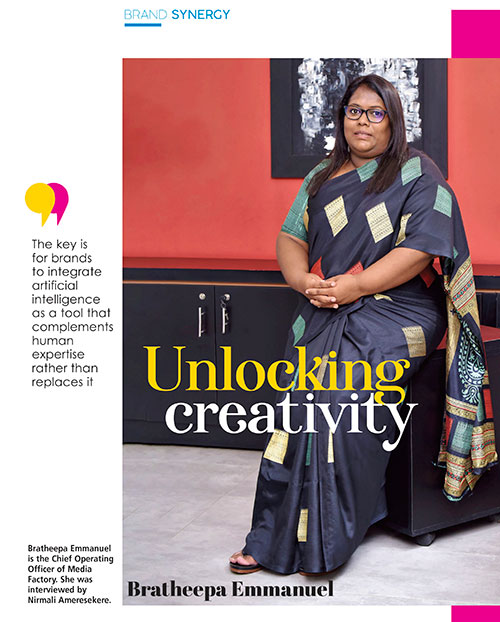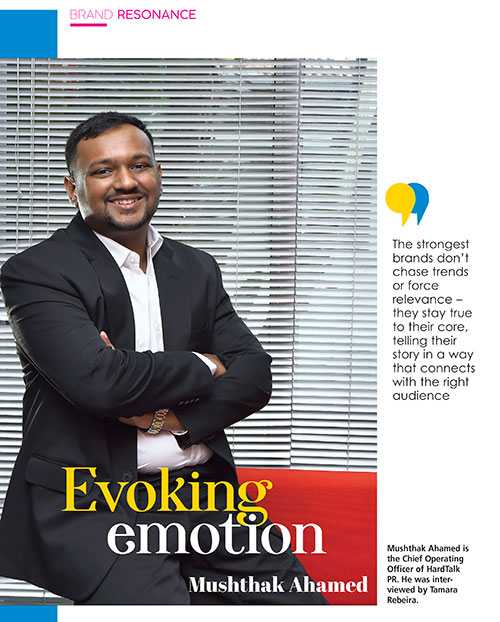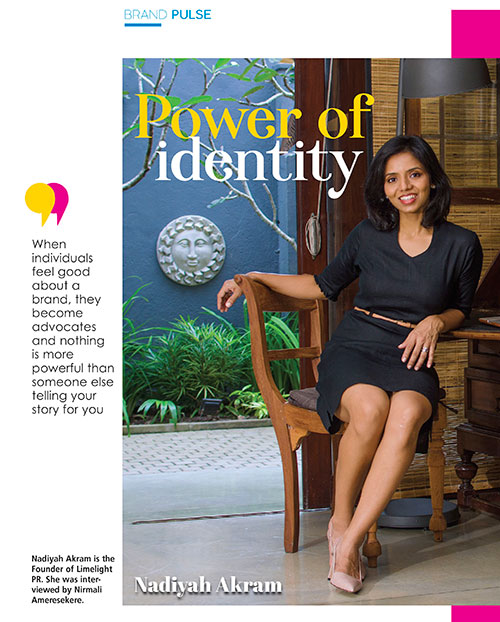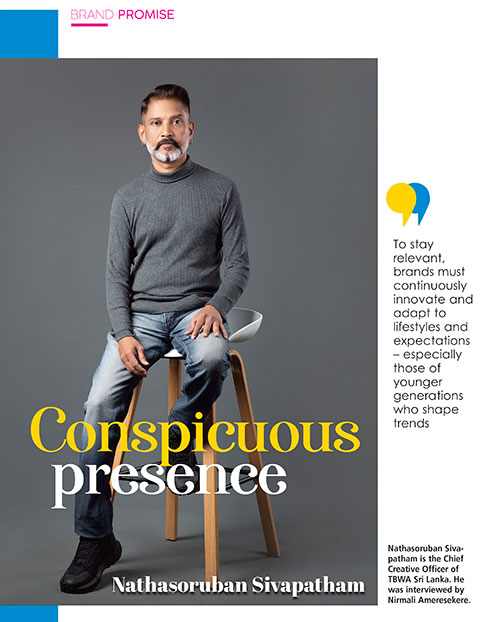CRAFTING AN IDENTITY
BRAND LOYALTY
Neela Marikkar

Storytelling and engagement have emerged as top priorities in the branding arena in the digital era. Do you believe that brand guardians are adapting to this new reality?
Storytelling has been and will continue to be at the heart of the creative industry. Our job is curating brand stories; and today, with the evolution of digital platforms, storytelling has evolved from a one-way communication in new and exciting ways that bring so many wonderful consumer engagement opportunities for brands.
In our market however, most brands have been slow to adapt. This is because they haven’t fully embraced the value of digital platforms and been slow to invest in this medium, which is disappointing.
Going forward, the marketing fraternity must recognise that simply using digital and social platforms for promotional content is insufficient to capture and retain consumer attention.
They need to create compelling brand stories that make meaningful and relevant connections with consumers, by leveraging a mix of authentic narratives, user generated content, interactive experiences, personalisation and data driven insights.
Today, digital is the fastest growing medium as consumers invest more time in virtual worlds. Brands that don’t invest in these new platforms in innovative and engaging ways will lose out.
How would you craft a brand identity – e.g. brand names, colour schemes, typography and visual elements?
It is a design process that requires a deep understanding of the various aspects and elements of a brand, and the category it operates in.
We would begin by defining what the brand stands for, and its core values, purpose and competitive framework – as well as the category it operates in.
Next would be identifying the target audience, their psychographics and lifestyle habits. Identifying these elements will help curate the brand identity to resonate with the target audience.
When picking a brand name, it needs to be easy to pronounce and spell – and most of all, it should be memorable and reflect the brand’s values. The fonts used should be legible and easy to identify.
When selecting a colour palette, it should evoke an emotional connection to the brand. The final logo design should be unique, scalable and versatile so it can be used across all brand touch points whether in print or digital formats.
It’s important to undertake research and ensure that the brand name isn’t already registered before you proceed.
Once all these elements are completed, it’s essential to put together a comprehensive brand identity manual that elaborates on how the brand elements should and shouldn’t be used.
What strategies do you employ to cultivate brand loyalty and nurture long-term relationships with consumers in the digital realm?
Consistent branding and messaging helps reinforce a brand with its target audience, which in turn builds brand loyalty over time. It also enables the brand to deliver strong customer service across digital platforms by responding promptly to inquiries, feedback and complaints.
A positive customer experience will build greater brand love and loyalty. By encouraging user generated content like customer reviews, testimonials and social media posts, a brand can actively engage with and amplify such content, to foster a sense of community and belonging.
Digital platforms can also help develop loyalty programmes to reward repeat customer purchases and brand engagement. It provides brands with an opportunity to offer exclusive discounts, incentives and rewards to loyal customers.
The best outcome is when we see happy consumers refer friends and family through referral programmes. This expands the customer base and reinforces brand loyalty.
It’s important to be honest and authentic in your communications. Listening to customer feedback by incorporating changes to your products, services and marketing strategies will reinforce their trust, showing them that their opinions matter.





